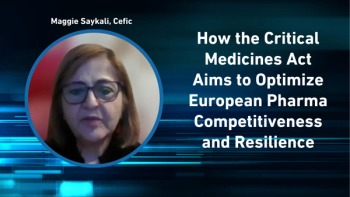
Keeping Generics Relevant: a Wish List from Dilip Shah
Containing costs and improving compliance will be crucial to ensuring the growth of generic pharmaceuticals in the future, says Dilip Shah, CEO of Vision Consulting Group, in CPhI’s 2016 Annual Report, which will be formally issued at CPhI 2016 in Barcelona.
Even though generic pharmaceuticals account for most of the prescriptions issued in the US and the world, their manufacturers face major challenges in strengthening the market and ensuring growth. On p. 60 of
Shah lists the main issues as cost containment and compliance. Most of the costs stem from regulations and the approval process. He suggests the following solutions:
- A single reference product for companies that export one version of a generic to numerous global markets. The current system, which requires that applicants use “local” products as references, results in a proliferation of redundant and time-consuming tests, as multiple reference products are evaluated
- Harmonized compendial standards, so that various national pharmaceopeias agree on one common standard. The result, Shah suggests, would be reduced variability.
- Faster product approvals. Currently, it can take anywhere from four months to three years to approve a generic drug. If this timeframe were reduced to a maximum of one year, manufacturers would be able to produce new generic drugs sooner, bringing enhanced availability to patients.
- Reduced waiting timesfor establishment and inspection reports. Long waits, Shah says, are a major reason for the high costs of generic approvals.
- More guidance from regulators, who should explain the scientific rationale behind their guidance. In addition, Shah says they should ensure that rules and requirements are based on good science, and that the goals behind them remain consistent. Shah believes that the role of the regulator needs to change from merely being an auditor to being a “facilitator,” and asks that workshops be held to disseminate best compliance practices.
- More input from industry, to help ensure that inspectors develop the best quality metrics for risk-based inspections. Ideally, a common checklist would achieve the best results.
- More efficient resolution of remedial actions, which would entail allowing manufacturers to discuss possible remedial actions.
- Willingness of top corporate managers and regulators to help manufacturers gain the capabilities they need to improve product quality, help ensure supply, and reduce cost.
Source: D. Shah, Licensing of Generics: Needs and Expectations of Industry, p. 60,
Newsletter
Get the essential updates shaping the future of pharma manufacturing and compliance—subscribe today to Pharmaceutical Technology and never miss a breakthrough.




